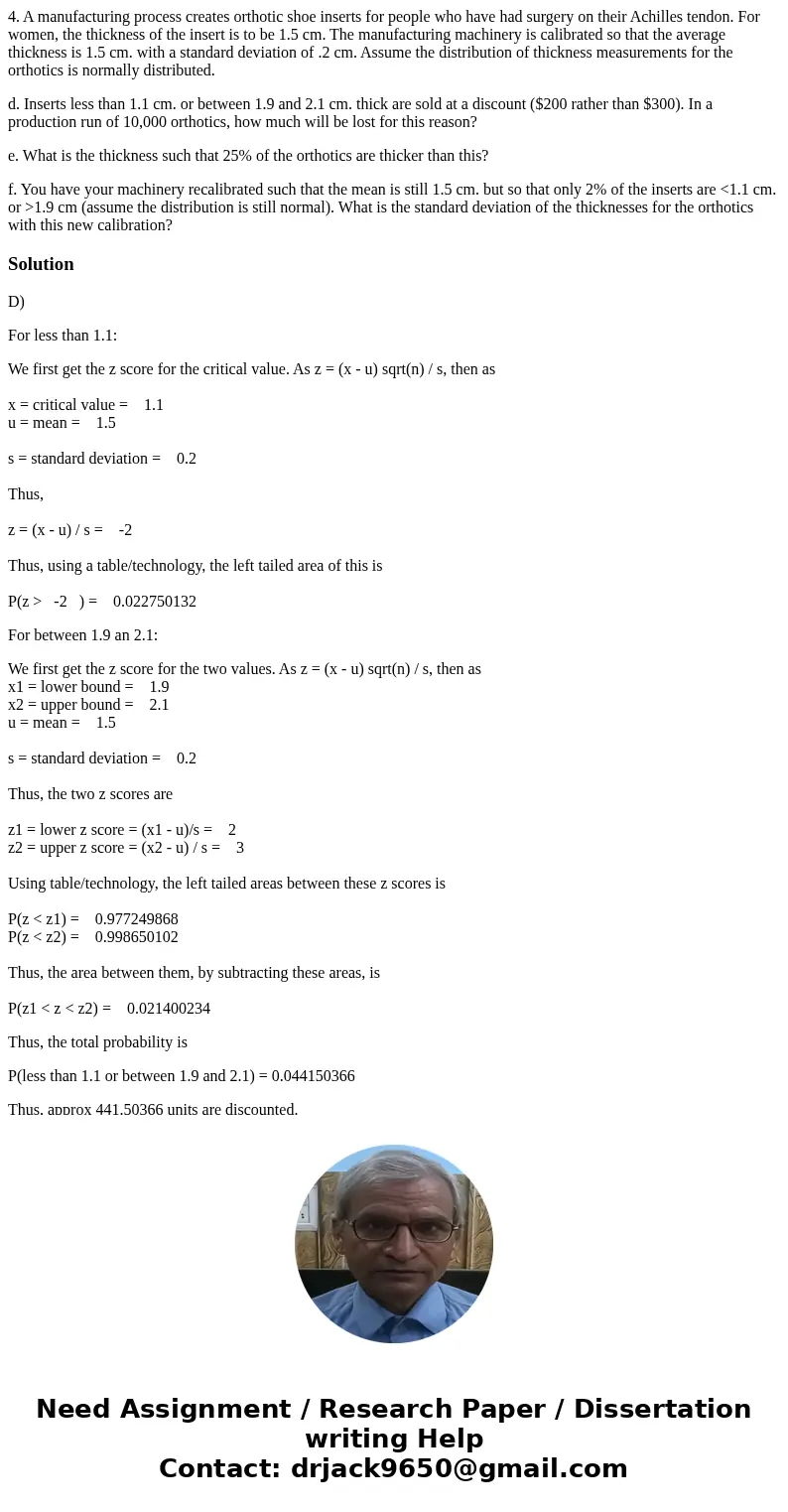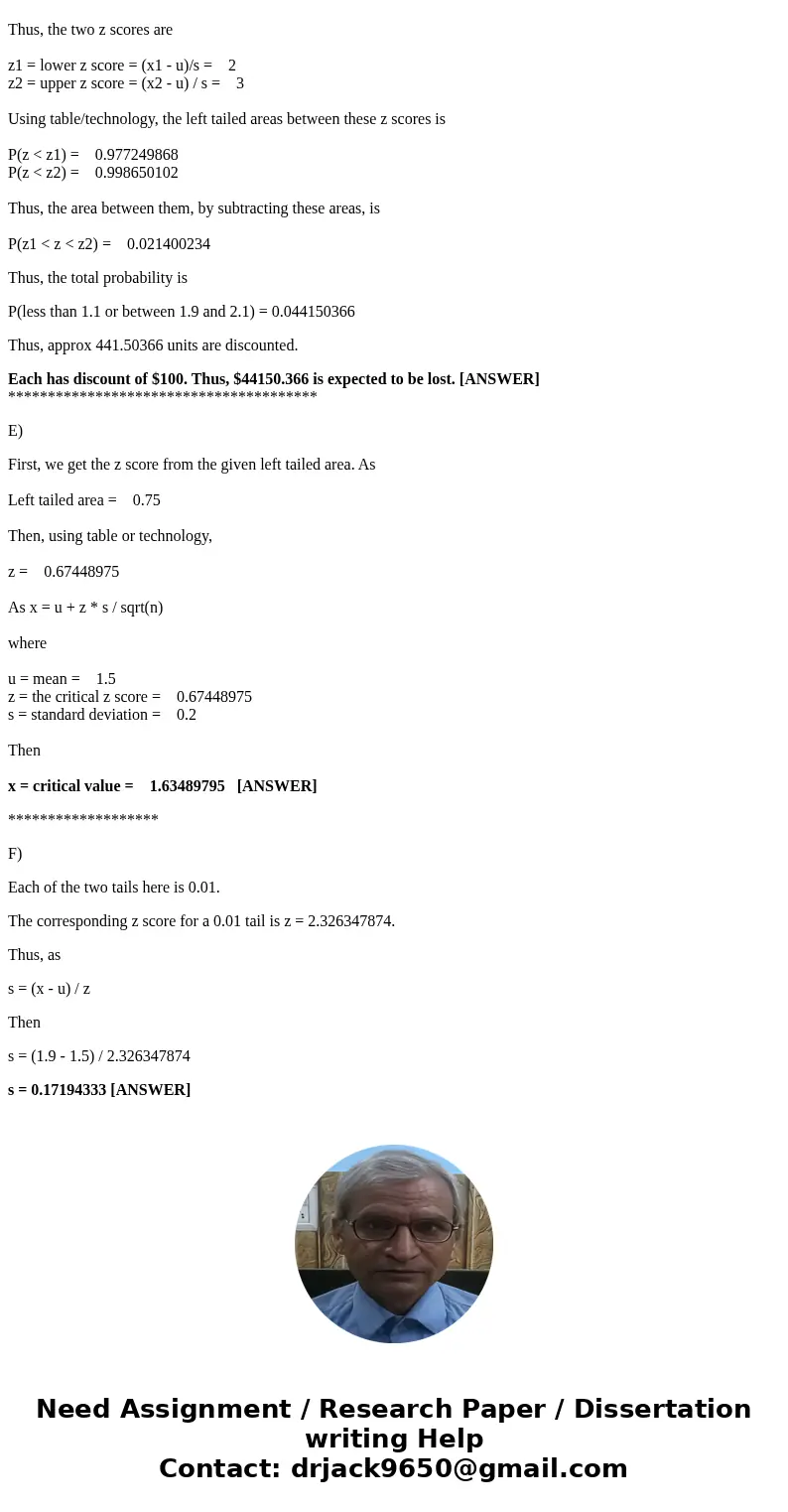4 A manufacturing process creates orthotic shoe inserts for
4. A manufacturing process creates orthotic shoe inserts for people who have had surgery on their Achilles tendon. For women, the thickness of the insert is to be 1.5 cm. The manufacturing machinery is calibrated so that the average thickness is 1.5 cm. with a standard deviation of .2 cm. Assume the distribution of thickness measurements for the orthotics is normally distributed.
d. Inserts less than 1.1 cm. or between 1.9 and 2.1 cm. thick are sold at a discount ($200 rather than $300). In a production run of 10,000 orthotics, how much will be lost for this reason?
e. What is the thickness such that 25% of the orthotics are thicker than this?
f. You have your machinery recalibrated such that the mean is still 1.5 cm. but so that only 2% of the inserts are <1.1 cm. or >1.9 cm (assume the distribution is still normal). What is the standard deviation of the thicknesses for the orthotics with this new calibration?
Solution
D)
For less than 1.1:
We first get the z score for the critical value. As z = (x - u) sqrt(n) / s, then as
x = critical value = 1.1
u = mean = 1.5
s = standard deviation = 0.2
Thus,
z = (x - u) / s = -2
Thus, using a table/technology, the left tailed area of this is
P(z > -2 ) = 0.022750132
For between 1.9 an 2.1:
We first get the z score for the two values. As z = (x - u) sqrt(n) / s, then as
x1 = lower bound = 1.9
x2 = upper bound = 2.1
u = mean = 1.5
s = standard deviation = 0.2
Thus, the two z scores are
z1 = lower z score = (x1 - u)/s = 2
z2 = upper z score = (x2 - u) / s = 3
Using table/technology, the left tailed areas between these z scores is
P(z < z1) = 0.977249868
P(z < z2) = 0.998650102
Thus, the area between them, by subtracting these areas, is
P(z1 < z < z2) = 0.021400234
Thus, the total probability is
P(less than 1.1 or between 1.9 and 2.1) = 0.044150366
Thus, approx 441.50366 units are discounted.
Each has discount of $100. Thus, $44150.366 is expected to be lost. [ANSWER]
***************************************
E)
First, we get the z score from the given left tailed area. As
Left tailed area = 0.75
Then, using table or technology,
z = 0.67448975
As x = u + z * s / sqrt(n)
where
u = mean = 1.5
z = the critical z score = 0.67448975
s = standard deviation = 0.2
Then
x = critical value = 1.63489795 [ANSWER]
*******************
F)
Each of the two tails here is 0.01.
The corresponding z score for a 0.01 tail is z = 2.326347874.
Thus, as
s = (x - u) / z
Then
s = (1.9 - 1.5) / 2.326347874
s = 0.17194333 [ANSWER]


 Homework Sourse
Homework Sourse